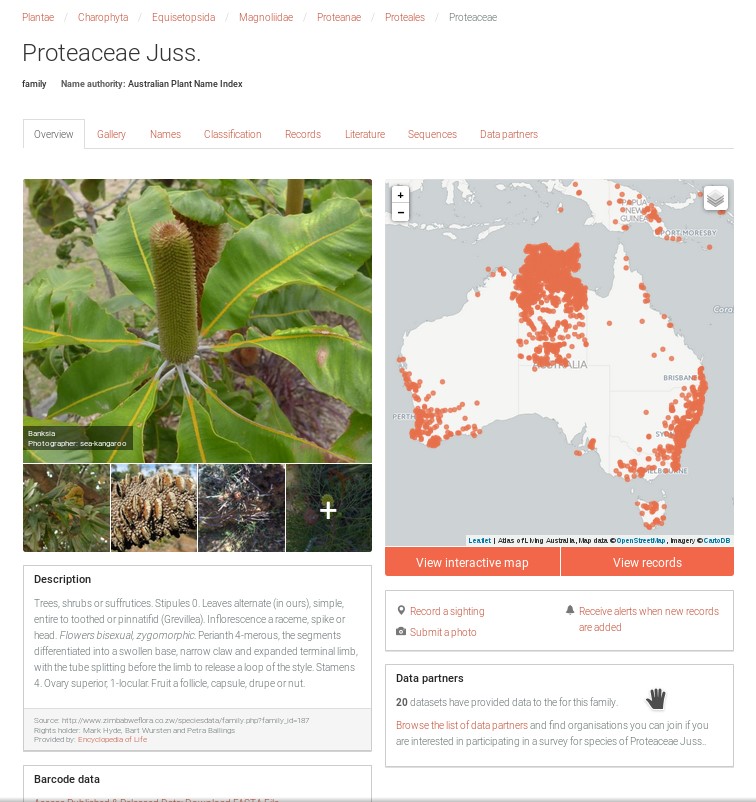After many months of work, a major upgrade to the taxonomic backbone of the ALA will go live this week.
Users will recognise a change to the look and feel of the species pages, and major improvements to the search and quality of results on our species lists.
The focus was to update the naming system and bring it up to speed with the key authoritative sources, namely: the Australian Plant Name Index (APNI), Australian Plant Census (APC) and the Australian Faunal Directory from the Australian Biological Resources Study (ABRS) as well as Australian Fungi, Australian Mosses Online, Australian Codes of Aquatic Biota, Catalogue of Life, and the New Zealand Organisms Register.
This was a major piece of work requiring a complete rewrite of some of the ALA’s original software. The major benefits to users will be an improvement to the quality of species information. In addition, duplicate records have been removed and, where possible, links to the original source data have been included.
Naming and classification of biological organisms (taxonomy) is one of the most fundamental streams of science. It aims to provide a complete list of all living organisms on the planet and their relationships to eachother. By establishing a common language for all organisms and their taxonomic categories, it enables scientists across the globe to communicate and collaborate effectively.
It’s easy to think that a list of names is more or less set in stone but taxonomy is surprisingly dynamic and changes occur frequently. The ALA upgrade makes it easier for us to update our species lists on a regular basis. As a result, we can keep the ALA species lists up-to-date with developments or changes in taxonomic science.
This is a major change and so we won’t be surprised if users encounter some (not many!) issues in the first few weeks after release. Please contact us if you need assistance.
Many thanks to all our colleagues at ABRS, APNI, APC, the Council of Heads of Australiasian Herbaria (CHAH), as well as Tom May and Niels Klazenga at the Royal Botanic Gardens Melbourne.
